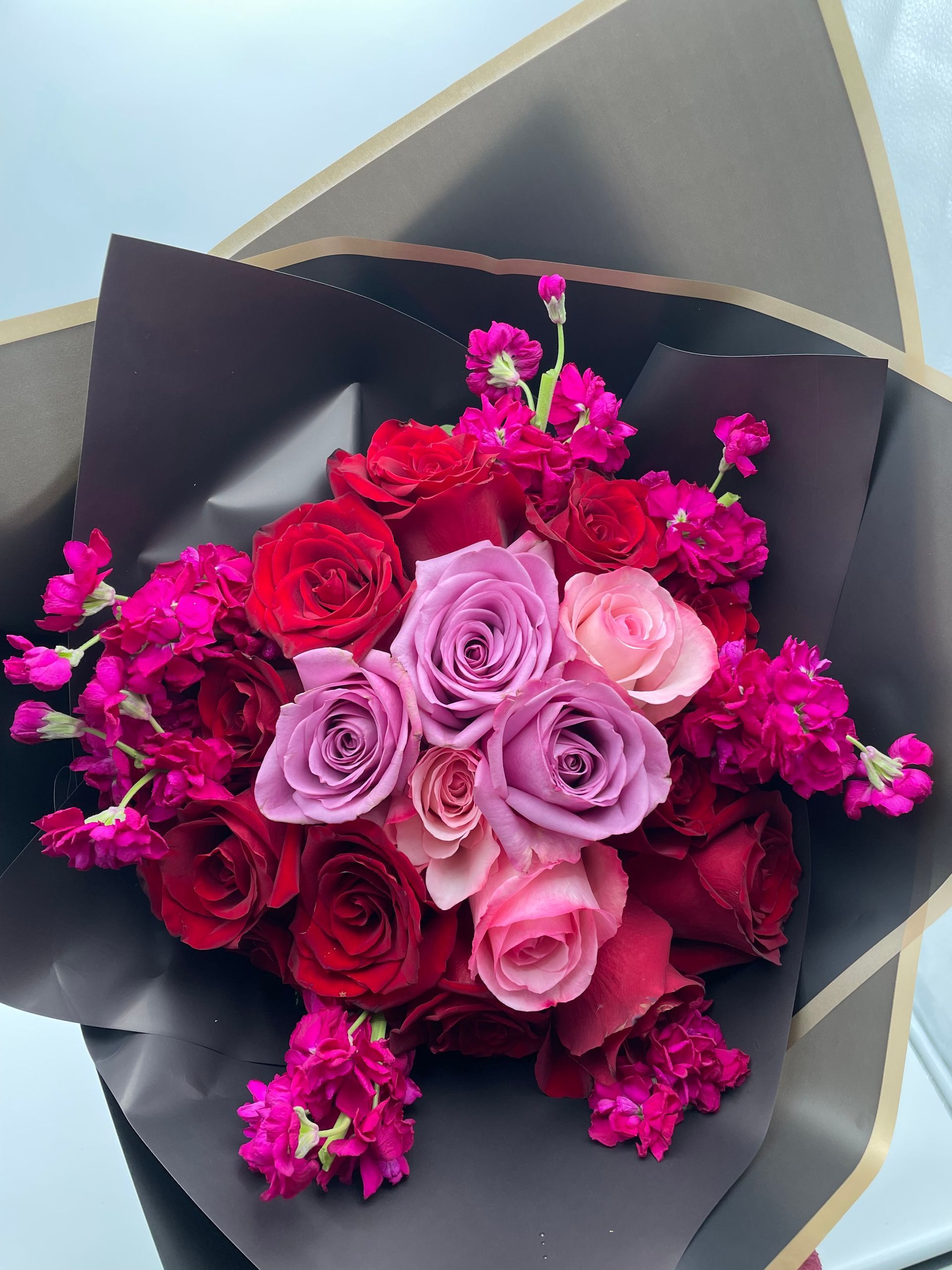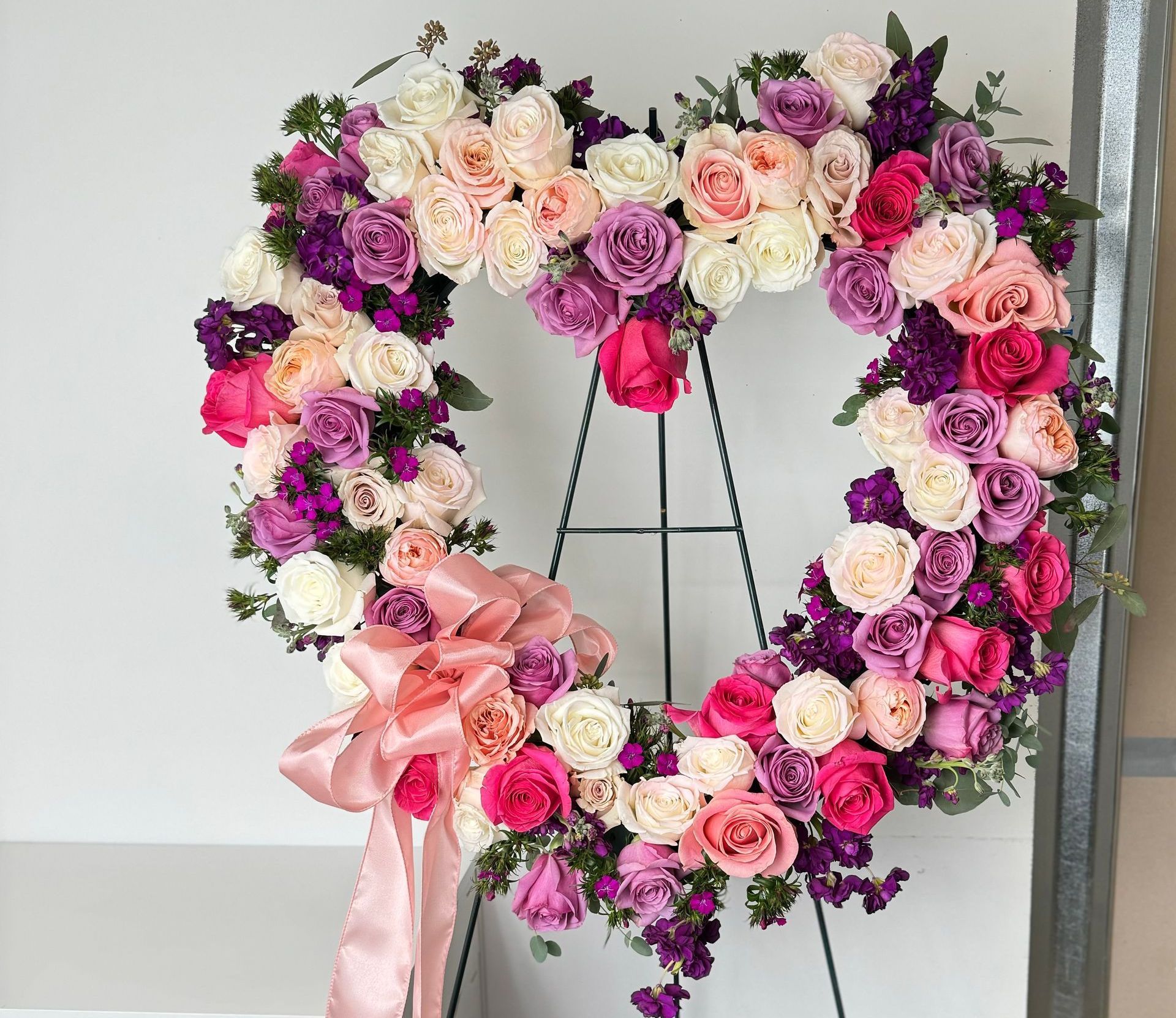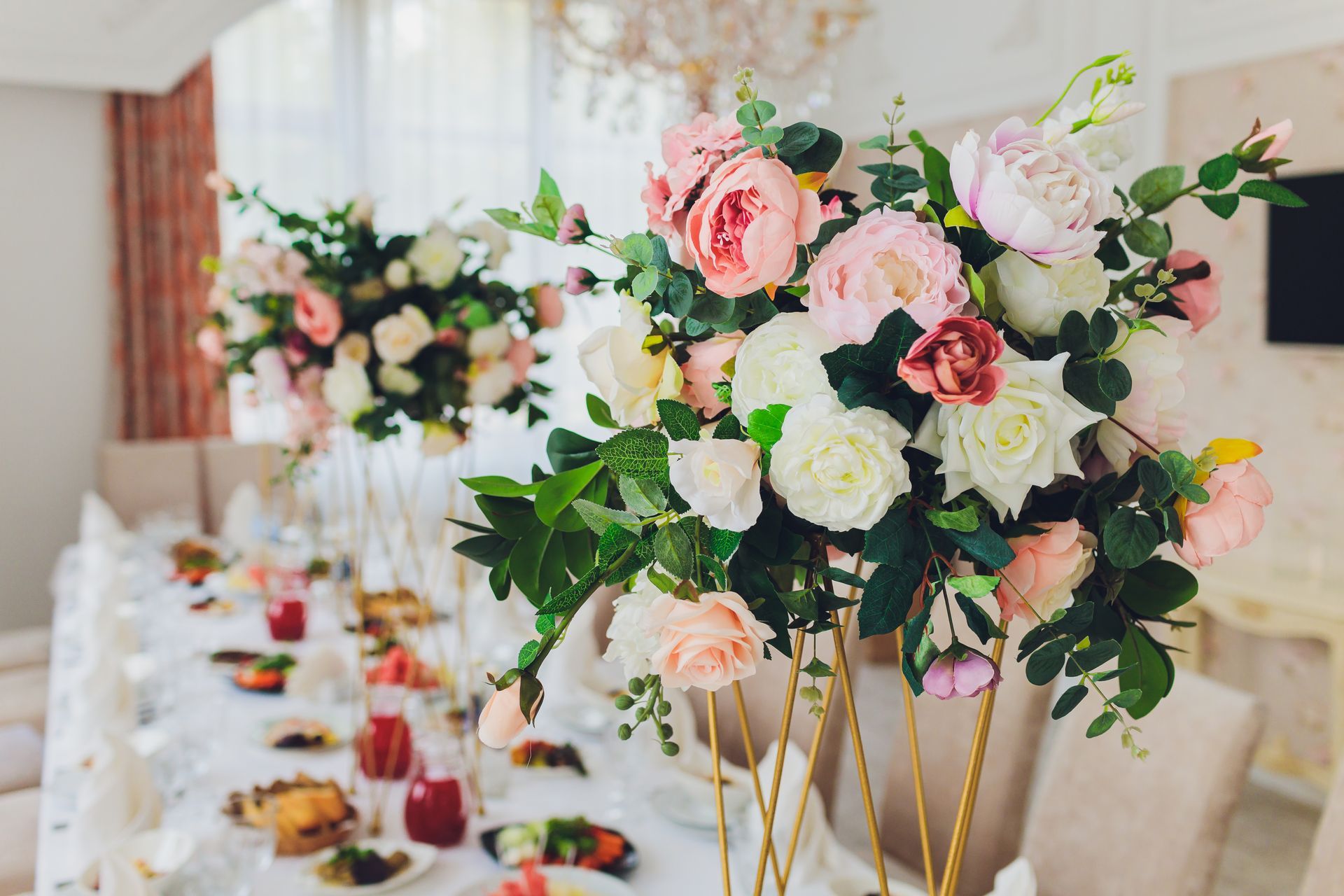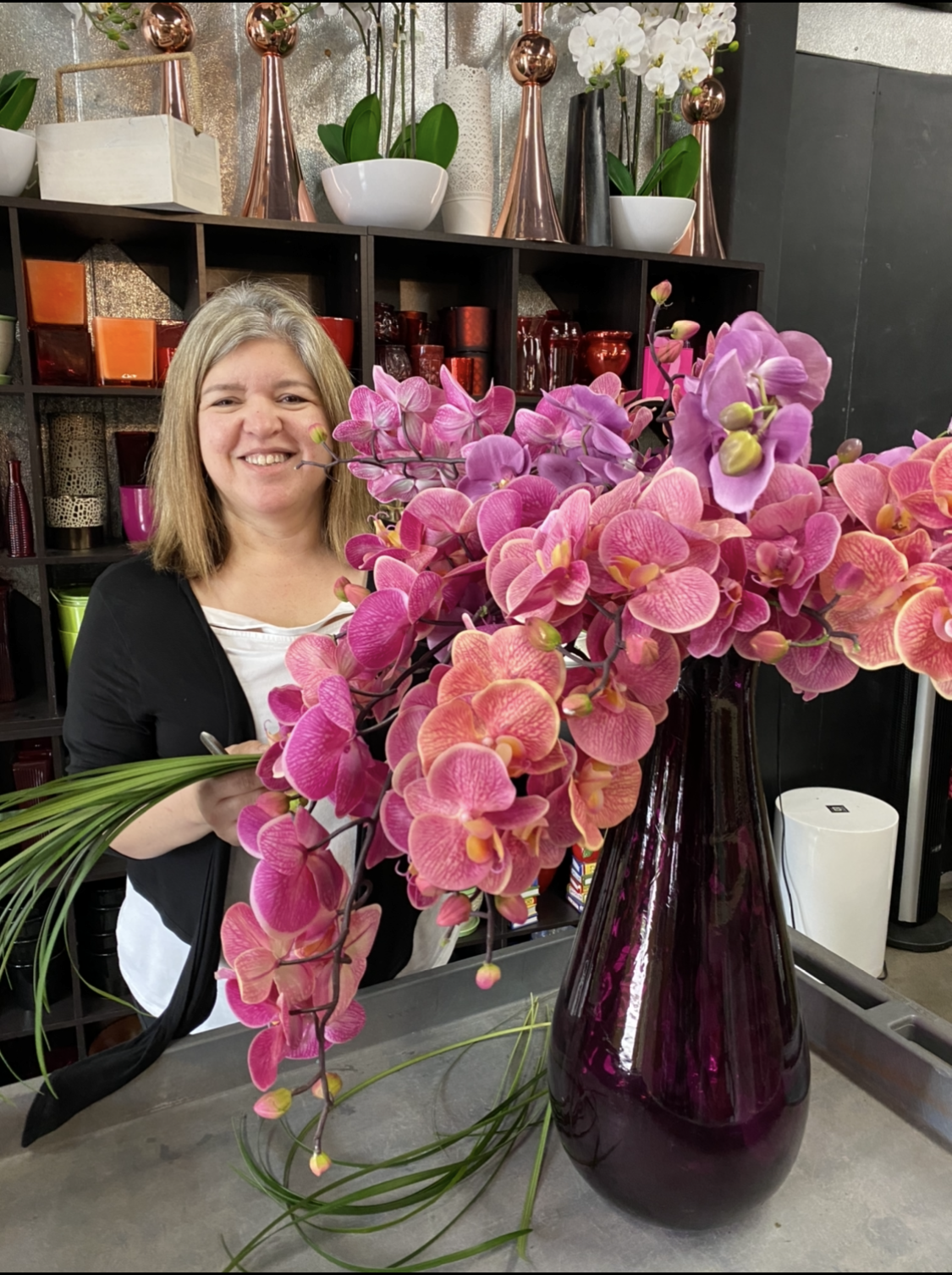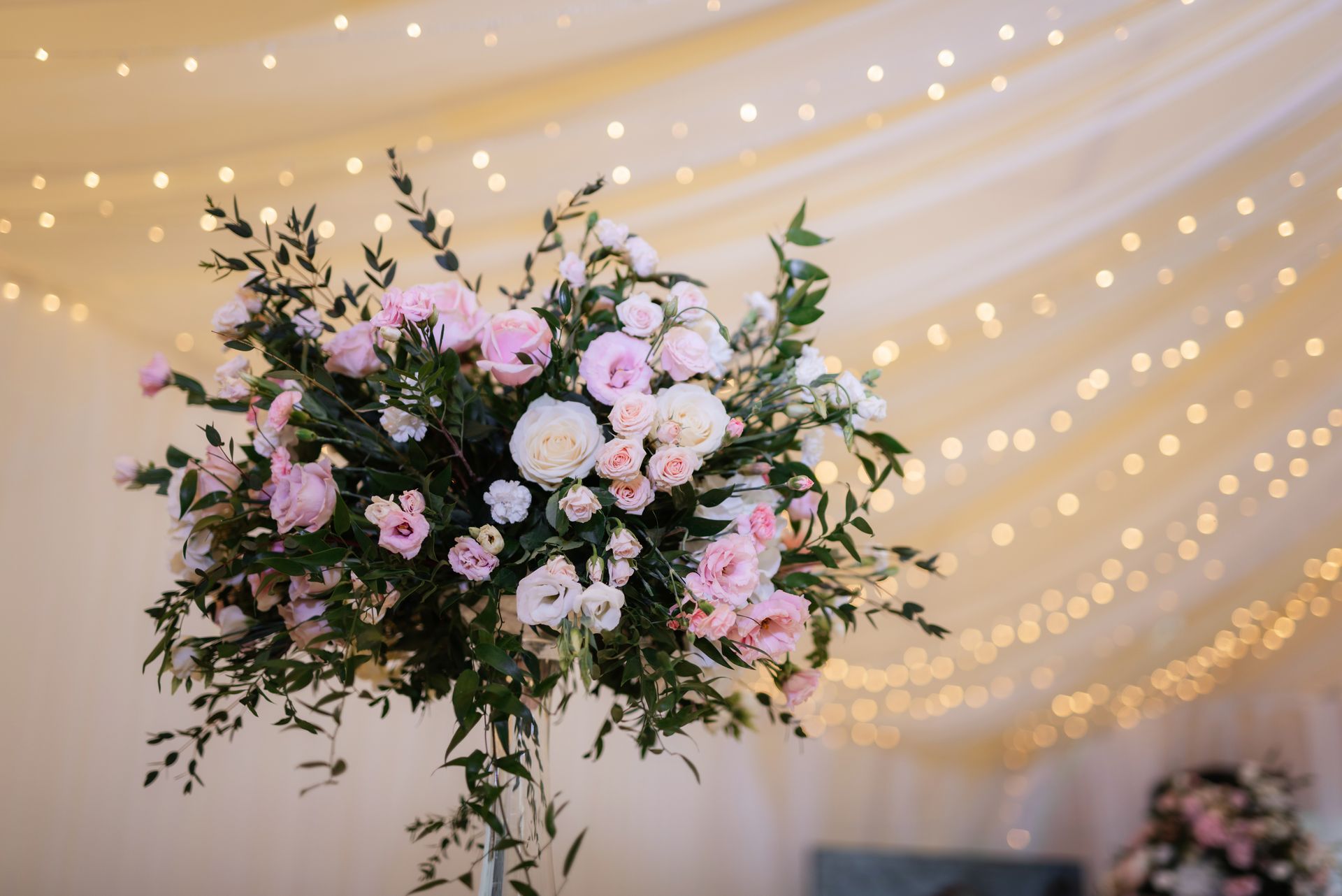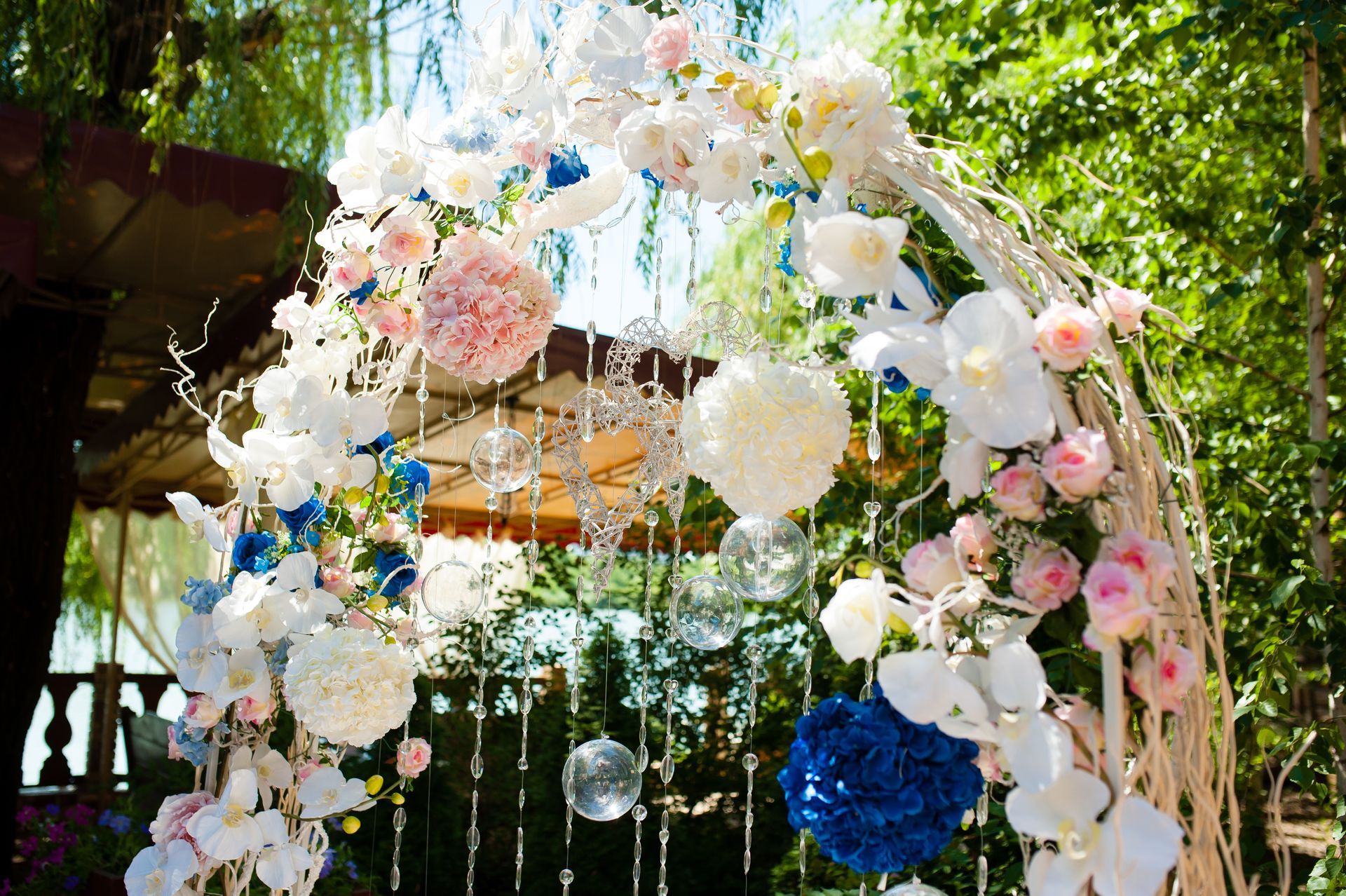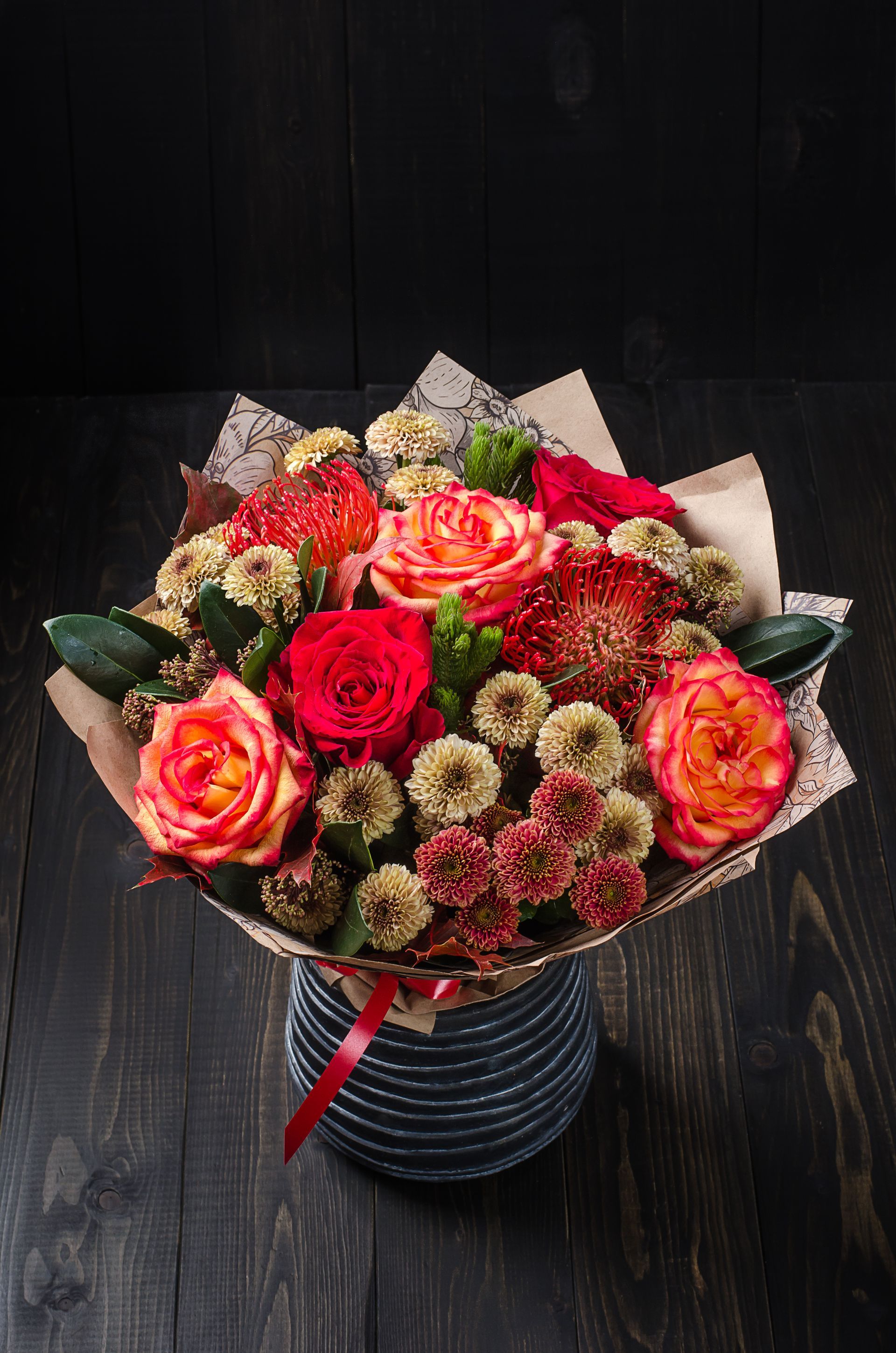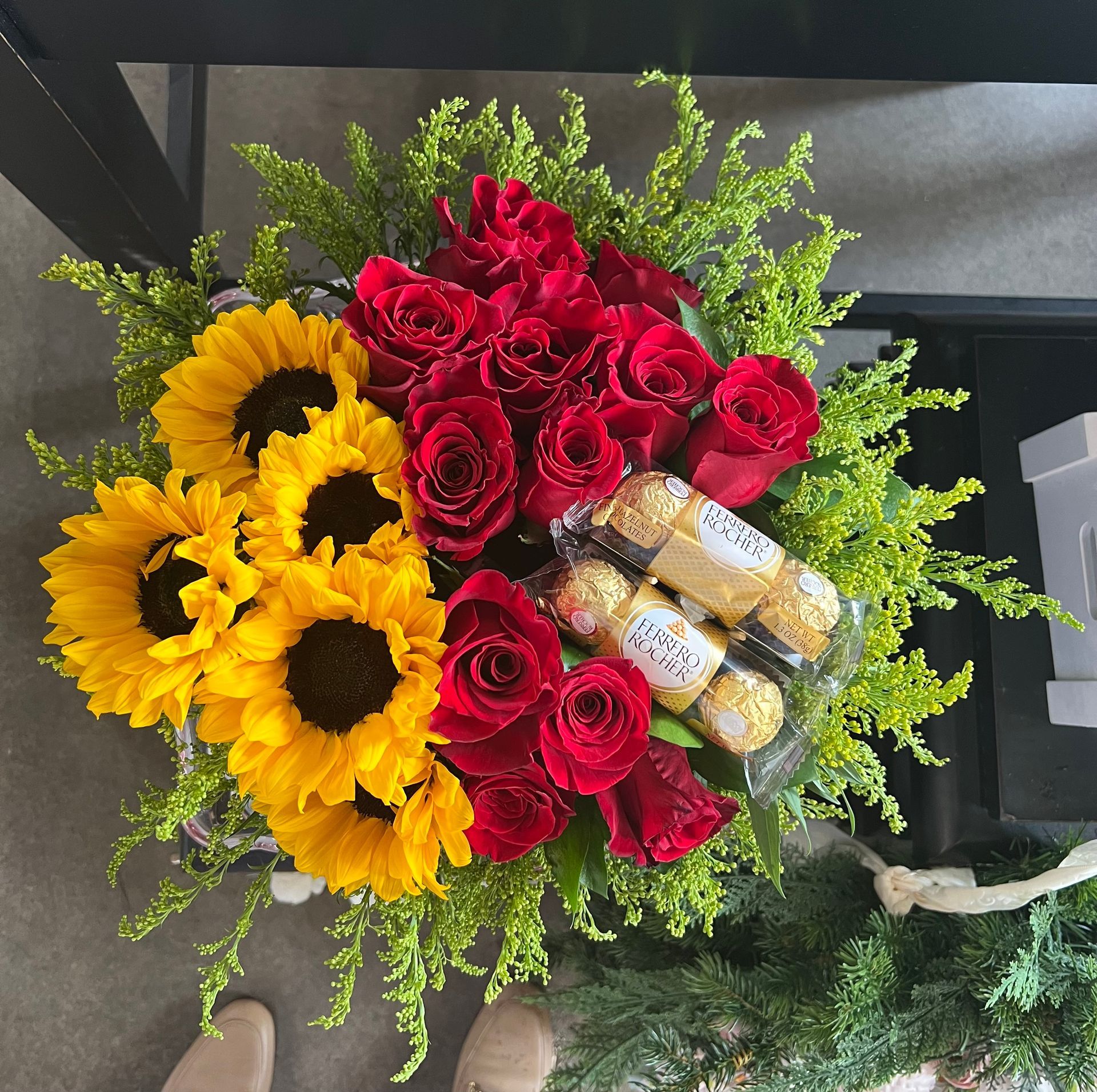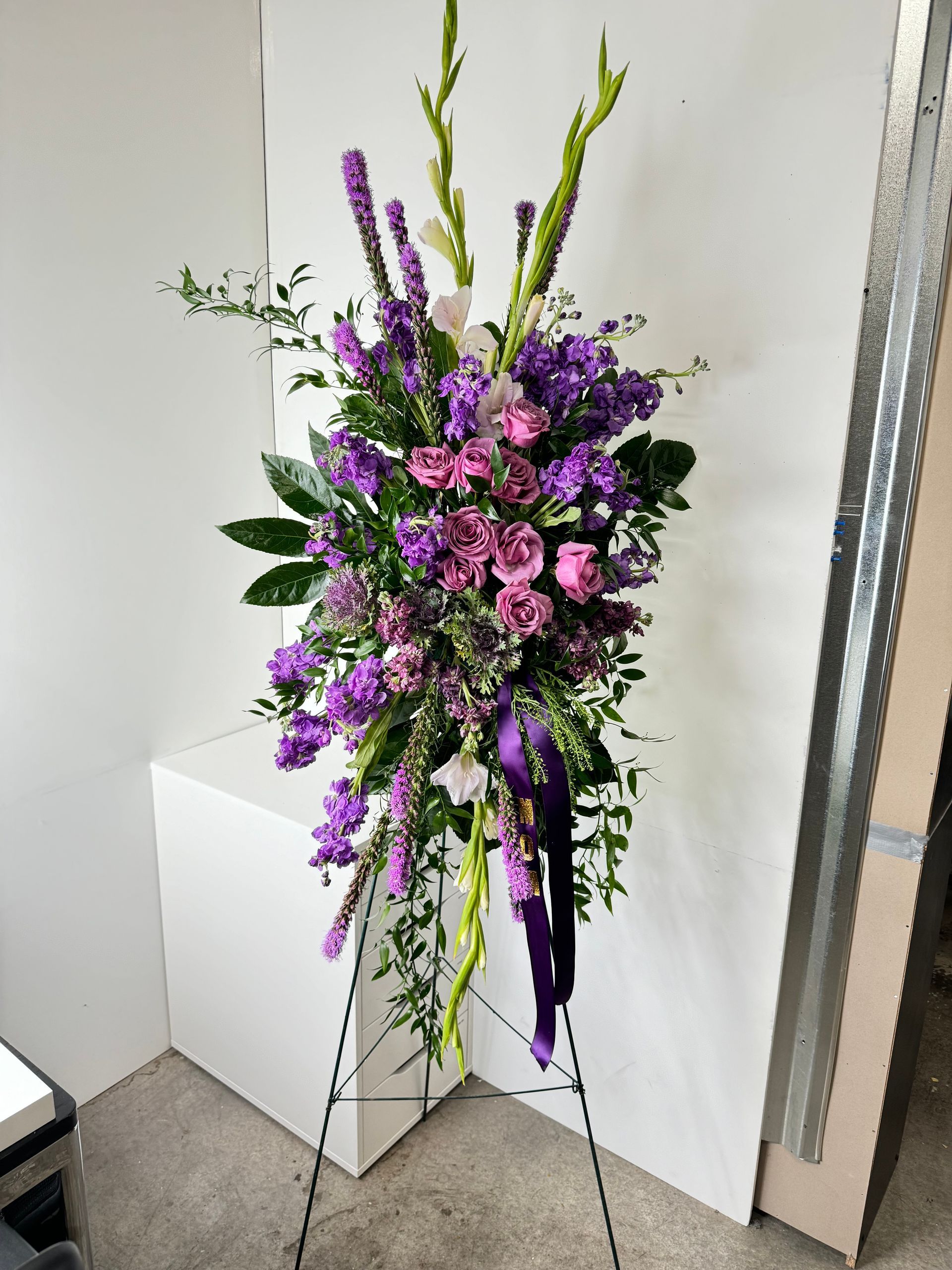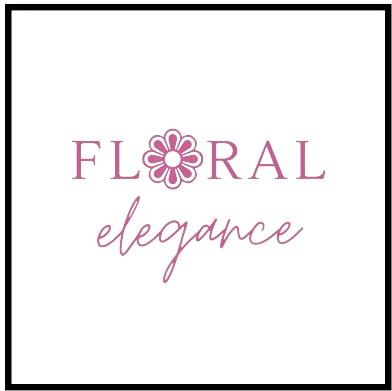
Blooming Beauties: Mastering Event Floral Arrangements for Stunning Ambiance and Unforgettable Moments
Welcome to our blog series on event floral arrangements! Whether you're planning a wedding, gala, corporate event, or any special occasion, the right floral arrangements can truly transform the ambiance and create unforgettable moments. In this blog post, we will guide you through the art of mastering event floral arrangements, from understanding their significance to selecting the perfect florist and ensuring successful execution.
Part I: Introduction to Event Floral Arrangements
A. What are event floral arrangements? Event floral arrangements are carefully curated displays of flowers and foliage that are specifically designed to enhance the aesthetic and atmosphere of an event. These arrangements can range from centerpieces and bouquets to ceremony decor and more.
B. Importance of floral arrangements in events Floral arrangements play a vital role in events as they add beauty, elegance, and a touch of nature to the surroundings. They have the power to set the mood, evoke emotions, and leave a lasting impression on guests.
C. How event floral arrangements can enhance the ambiance and theme of an event By carefully selecting and arranging flowers, event planners can create a cohesive and visually stunning experience that aligns with the event's theme and color palette. From romantic and whimsical to modern and sophisticated, floral arrangements can bring any desired ambiance to life.
In the following sections, we will explore different types of event floral arrangements, factors to consider when choosing them, finding the right florist, and valuable tips for successful execution. Let's dive in!
Part II: Types of Event Floral Arrangements
A. Centerpieces Centerpieces are the focal point of any table setting. We will discuss the different types commonly used in events, factors to consider when choosing them, and provide examples of popular centerpieces such as tall vases with cascading flowers.
B. Bouquets and Boutonnieres Bouquets and boutonnieres are essential for weddings, galas, and other personal occasions. We will explore the various styles suitable for different events and share tips for selecting the right ones.
C. Ceremony Decor Ceremony spaces, such as altars and arches, can be beautifully adorned with floral arrangements. We will highlight the importance of floral decor in these areas and showcase stunning examples like hanging installations and floral aisles.
Part III: Factors to Consider When Choosing Event Floral Arrangements
A. Event Theme and Color Palette Matching floral arrangements with the overall theme and color scheme of the event is crucial. We will discuss how to select flowers that complement the theme and how seasonal blooms can enhance the ambiance.
B. Venue and Space Considering the size, layout, and style of the event venue is essential when choosing floral arrangements. We will provide guidance on adapting arrangements to different spaces, such as indoor and outdoor venues.
C. Budget and Cost Considerations We will explore the impact of flower choices on the overall cost and provide tips for maximizing the impact of floral arrangements within a given budget.
Part IV: Finding the Right Florist for Event Floral Arrangements
A. Researching and Shortlisting Florists We will guide you through the process of finding local florists using online search platforms and directories. Additionally, we will emphasize the importance of reading reviews and testimonials to assess the reputation and quality of service.
B. Meeting with Florists and Discussing Expectations We will provide a list of essential questions to ask potential florists during meetings. Additionally, we will discuss the importance of effective communication and how to convey event details, preferences, and budget accurately.
C. Requesting and Reviewing Proposals Understanding the breakdown of costs and services in floral proposals is crucial. We will provide insights on comparing proposals to make an informed decision.
Part V: Tips for Successful Event Floral Arrangements
A. Timing and Delivery We will emphasize the importance of coordinating with the florist for timely delivery and setup. Additionally, we will provide tips for preserving the freshness and quality of floral arrangements throughout the event.
B. Maintenance and Care Advice for maintaining the appearance of floral arrangements during the event will be shared. We will also discuss proper disposal or repurposing of floral arrangements after the event.
C. Sustainability and Eco-Friendly Options We will explore eco-friendly alternatives in floral arrangements, such as locally sourced flowers and reusable materials. Additionally, we will provide tips for reducing waste and environmental impact.
By the end of this blog post, you will have a comprehensive understanding of event floral arrangements and be equipped with the knowledge to create stunning and memorable displays for your events. Let's embark on this blooming journey together!
Effective Communication and Order Management
Clear and effective communication between event planners and florists is essential for successful event floral arrangements. From discussing expectations to finalizing orders, maintaining open lines of communication ensures that both parties are on the same page and can deliver the desired results. In this section, we will explore the key aspects of effective communication and order management when working with a florist.
Discussing Expectations
When meeting with potential florists, it is crucial to have a thorough discussion about your event's floral requirements and expectations. This is the time to share your vision, theme, color palette, and any specific preferences you may have. Clearly communicate the overall atmosphere and style you want to achieve, providing examples or inspiration images if possible. By expressing your desires and expectations upfront, you can ensure that the florist understands your vision and can deliver accordingly.
During these discussions, it's important to ask the florist about their experience and expertise in handling similar events. Inquire about their portfolio and previous work to assess if their style aligns with your vision. Additionally, ask for recommendations or ideas they may have based on their experience. A skilled florist can provide valuable insights and suggestions to enhance your floral arrangements.
Determining Floral Quantities and Budget
Once you have conveyed your expectations and preferences to the florist, it's time to discuss specific details such as floral quantities and budget. The florist will need to know the number of arrangements required, the types of flowers and foliage to be used, and any additional elements like vases or containers. This information will help them estimate the overall cost and ensure they can source the necessary materials.
During this stage, it's important to be realistic about your budget and communicate it clearly to the florist. A professional florist will work with you to find creative solutions that fit within your budget while still delivering beautiful arrangements. They can suggest alternative flower choices, provide cost-saving tips, or propose different design options to meet your financial constraints without compromising on quality.
Order Confirmation and Contract
Once all the details have been discussed and agreed upon, it's crucial to have a written order confirmation or contract in place. This document should outline the agreed-upon floral arrangements, quantities, delivery date and time, and the total cost. Having a contract not only protects both parties but also ensures that there is a clear reference point for any future discussions or clarifications.
Review the contract carefully before signing, ensuring that all the details are accurately listed. If there are any changes or adjustments, communicate them to the florist and have the contract revised accordingly. It's important to maintain transparency and avoid any misunderstandings or surprises on the day of the event.
Maintaining Communication Throughout the Process
Effective communication doesn't stop after the initial discussions and contract signing. It's important to maintain regular contact with the florist as the event approaches. Check-in periodically to provide updates, clarify any additional details, or address any concerns that may arise. This will help both parties stay informed and ensure that everything is progressing smoothly.
As the event date gets closer, confirm all the final details with the florist, including the delivery schedule, setup requirements, and any last-minute changes. By maintaining open lines of communication, you can address any potential issues proactively and ensure that the floral arrangements are executed flawlessly on the day of the event.
Effective communication and order management are crucial components of successful event floral arrangements. By discussing expectations, determining floral quantities and budget, confirming orders through contracts, and maintaining open lines of communication, you can build a strong relationship with your florist and achieve the desired results. The next section will explore the importance of timing and delivery when it comes to event floral arrangements.
Timing and Delivery
The timing and delivery of event floral arrangements are crucial factors that can significantly impact the overall success of an event. Proper coordination between the florist, event planner, and venue staff ensures that the floral arrangements are delivered and set up on time, and that they maintain their freshness throughout the event. In this section, we will delve into the importance of timing and delivery in event floral arrangements and provide valuable tips to ensure a seamless execution.
Coordinating with the Florist
Effective communication and coordination with the florist is key when it comes to timing and delivery. It's essential to discuss the delivery schedule well in advance to ensure that the floral arrangements arrive at the venue on time. The florist will consider factors such as the time required for flower preparation, transportation, and setup when determining the delivery schedule.
Additionally, it's important to share any specific venue rules or regulations with the florist. Some venues may have restrictions on delivery times or require specific arrangements for setup. By communicating these details to the florist, they can plan accordingly and ensure a smooth delivery process.
Delivery and Setup
On the day of the event, it's crucial to have a designated point of contact at the venue who can receive and oversee the delivery of the floral arrangements. This person should be familiar with the event's setup plan and be able to guide the florist or their team to the appropriate locations.
When the floral arrangements arrive, it's important to inspect them carefully to ensure that they are in pristine condition. The point of contact should work closely with the florist to ensure that the arrangements are set up according to the agreed-upon design and placement. This may involve coordinating with other vendors, such as lighting or decor teams, to ensure that the floral arrangements are displayed in the best possible light.
Preserving Freshness and Quality
Maintaining the freshness and quality of the floral arrangements throughout the event is essential for creating a visually appealing atmosphere. To ensure this, it's important to consider factors such as temperature, lighting, and hydration.
Temperature control is critical to preserving the freshness of the flowers. Avoid placing the arrangements in direct sunlight or near heat sources that can wilt or damage the blooms. If the event is outdoors, consider the weather conditions and provide shade or protection if necessary.
Proper hydration is also crucial for maintaining the vitality of the floral arrangements. Ensure that the floral containers are filled with enough water and that the arrangements are regularly checked and hydrated as needed. It's a good idea to assign someone from the event staff to monitor and replenish the water throughout the event.
Disposal or Repurposing
After the event, it's important to have a plan for the disposal or repurposing of the floral arrangements. If the arrangements are still in good condition, consider donating them to local hospitals, nursing homes, or other charitable organizations. Many people would appreciate the beauty of the flowers and the joy they can bring.
If the arrangements are not suitable for donation, proper disposal is essential. Coordinate with the venue staff to ensure that the floral waste is disposed of responsibly, following any recycling or composting guidelines.
By paying attention to timing and delivery and taking steps to preserve the freshness and quality of the floral arrangements, you can ensure that they remain visually stunning throughout the event. The next section will delve into the maintenance and care of event floral arrangements during the event.
Maintenance and Care
Proper maintenance and care are crucial for ensuring that event floral arrangements maintain their pristine appearance throughout the duration of the event. From the moment the arrangements are set up until the event concludes, it's important to take proactive steps to preserve their freshness and beauty. In this section, we will explore essential tips for maintaining and caring for event floral arrangements during the event.
Regular Monitoring
Throughout the event, it's important to assign someone from the event staff to regularly monitor the floral arrangements. This individual should periodically check the arrangements for any signs of wilting, damage, or other issues. By catching any problems early on, prompt action can be taken to rectify the situation and ensure that the arrangements continue to look their best.
Watering and Hydration
Proper hydration is key to maintaining the freshness and longevity of the floral arrangements. Ensure that the floral containers are regularly checked and filled with fresh water as needed. It's important to monitor the water levels, particularly in arrangements that are exposed to heat or direct sunlight, as they may require more frequent watering.
In addition to water, some flowers benefit from floral preservatives or flower food. These additives contain nutrients that help nourish the flowers and extend their lifespan. Consult with the florist to determine if using floral preservatives is recommended for the specific types of flowers in the arrangements.
Refreshing and Pruning
Throughout the event, it may be necessary to refresh the floral arrangements by removing any wilted or damaged flowers, foliage, or petals. This can help maintain the overall appearance of the arrangements and prevent any unsightly elements from detracting from their beauty. Gently remove any spent or decaying blooms and trim any discolored or damaged foliage.
It's important to exercise caution when pruning the arrangements to avoid accidentally damaging the remaining flowers. Use clean and sharp floral shears or scissors to make clean cuts at an angle. Proper pruning techniques will not only improve the appearance of the arrangements but also allow for better water absorption for the remaining flowers.
Avoiding Disturbances
To ensure the longevity of the floral arrangements, it's important to minimize any disturbances or potential hazards. Encourage guests to admire the arrangements without touching or moving them. Restrict access to areas where the arrangements are displayed to prevent accidental damage or spills. By creating a clear boundary around the arrangements, you can minimize any risks and preserve their beauty throughout the event.
Proper Disposal or Repurposing
At the end of the event, it's important to have a plan for the proper disposal or repurposing of the floral arrangements. If the arrangements are still in good condition, consider repurposing them for a different event or donating them to local charities or nursing homes. This not only reduces waste but also brings joy to others who can appreciate the beauty of the flowers.
If the arrangements are no longer suitable for repurposing, coordinate with the event staff to ensure that they are disposed of responsibly. Composting or recycling options should be considered, keeping in mind any local regulations or guidelines.
By implementing proper maintenance and care strategies, you can ensure that event floral arrangements remain fresh, vibrant, and visually appealing throughout the event. The next section will explore sustainability and eco-friendly options for event floral arrangements, highlighting the importance of minimizing waste and reducing environmental impact.
Sustainability and Eco-Friendly Options
In today's world, it is essential to consider sustainability and eco-friendly options when planning event floral arrangements. By incorporating environmentally conscious practices, we can reduce waste, support local businesses, and minimize the carbon footprint associated with floral arrangements. In this section, we will explore the importance of sustainability in event floral arrangements and provide tips for reducing waste and environmental impact.
Locally Sourced Flowers
One of the most impactful ways to promote sustainability in event floral arrangements is by choosing locally sourced flowers. Locally grown flowers have a smaller carbon footprint as they require less transportation compared to imported blooms. Additionally, supporting local flower farms helps sustain local economies and promotes responsible farming practices.
When selecting flowers for your event, inquire with your florist about their sourcing practices. Ask if they work with local flower farms or have access to locally grown blooms. By opting for locally sourced flowers, you contribute to the preservation of natural resources and reduce the environmental impact associated with long-distance transportation.
Seasonal Blooms
Choosing seasonal blooms for your event floral arrangements not only ensures their freshness and quality but also supports sustainable practices. Seasonal flowers are naturally abundant during specific times of the year, which means they require fewer resources such as energy, water, and pesticides to grow. By embracing the beauty of each season and selecting flowers that are naturally available, you can minimize the environmental impact associated with forcing out-of-season blooms.
Consult with your florist to determine which flowers are in season during your event. They can provide valuable insights and suggest suitable options that align with your event's theme and color palette. Incorporating seasonal blooms adds a touch of authenticity to your arrangements and showcases the natural beauty of the time of year.
Reusable Materials
Another way to reduce waste and promote sustainability in event floral arrangements is by incorporating reusable materials. Instead of using single-use floral foam, consider alternatives such as reusable floral frogs, which provide stability and support for the flower stems. Floral frogs can be cleaned and reused for future events, minimizing waste and environmental impact.
When it comes to containers or vases, choose options that can be repurposed or recycled. Consider using vintage or repurposed containers, or opt for biodegradable materials such as bamboo or clay pots. After the event, these containers can be given to guests as take-home gifts or donated to local organizations for further use.
Minimizing Floral Waste
To further promote sustainability, it's important to minimize floral waste. Work closely with your florist to ensure that they order and prepare the appropriate quantities of flowers and foliage. By accurately estimating the required amount of blooms, you can prevent excessive waste.
Consider repurposing floral arrangements throughout the event to maximize their use. For example, if you have ceremony floral decor, repurpose them as centerpieces for the reception. By repurposing arrangements, you not only reduce waste but also create a cohesive and sustainable design concept.
Educating Guests
Lastly, take the opportunity to educate your guests about the sustainability efforts being implemented in your event floral arrangements. Display signage or provide information cards that explain the eco-friendly practices you have embraced. By raising awareness and sharing your commitment to sustainability, you can inspire others to make conscious choices when it comes to floral arrangements and event planning.
By incorporating sustainable practices such as choosing locally sourced and seasonal blooms, utilizing reusable materials, minimizing waste, and educating guests, you can create event floral arrangements that are not only visually stunning but also environmentally responsible. The next section will wrap up our comprehensive guide by providing some final tips and insights for successful event floral arrangements.
Final Tips for Successful Event Floral Arrangements
As we come to the end of our comprehensive guide on event floral arrangements, we want to leave you with some final tips and insights to ensure the success of your floral displays. These tips encompass various aspects, from planning and design to execution and beyond. By keeping these considerations in mind, you can create stunning and memorable event floral arrangements that leave a lasting impression on your guests.
1. Plan Ahead: Start the process of selecting and working with a florist well in advance to allow for ample time for discussions, proposals, and adjustments. Rushing through the process may result in overlooking important details or limited availability of certain flowers.
2. Embrace Creativity: Don't be afraid to think outside the box and explore unique floral design concepts. Work closely with your florist to create arrangements that reflect your personal style and vision. Incorporate unexpected elements, textures, and colors to add a wow factor to your event.
3. Consider Fragrance: While visual appeal is important, don't forget about the power of fragrance. Select flowers with delightful scents to create a multisensory experience for your guests. Fragrant blooms like roses, lilies, and lavender can add an extra layer of charm to your event.
4. Delegate Responsibilities: Assign a trusted member of your event team to oversee the floral arrangements on the day of the event. This person can work closely with the florist and venue staff to ensure that the arrangements are set up correctly and maintained throughout the event.
5. Capture Memories: Arrange for a professional photographer or designate someone to capture photographs of the floral arrangements. These images will serve as a beautiful reminder of the event and can be used for future reference or inspiration.
6. Express Gratitude: Take the time to express your gratitude to the florist and their team for their hard work and creativity in bringing your vision to life. A simple thank you note or a small token of appreciation can go a long way in building strong relationships and fostering future collaborations.
7. Learn and Improve: After the event, take the opportunity to reflect on the success of your event floral arrangements. Assess what worked well and what could be improved for future events. Continuously learning and striving for improvement will help you refine your skills and create even more remarkable floral displays in the future.
Conclusion
Remember, event floral arrangements have the power to elevate any occasion and create a truly enchanting atmosphere. By employing careful planning, effective communication, and attention to detail, you can achieve remarkable results that leave a lasting impact on your guests.
For those looking to create exceptional event floral arrangements in San Antonio, TX, one of the best service providers to consider is Floral Elegance Ltd. You can contact them at (210) 434-1133. With their expertise in creating beautiful and captivating floral designs, Floral Elegance Ltd. is a top choice for those seeking to add a touch of elegance and beauty to their events.
We hope this comprehensive guide has provided you with valuable insights and inspiration for creating exceptional event floral arrangements. Whether you're planning a wedding, gala, or corporate event, applying the tips and strategies discussed will help you bring your vision to life. Now it's time to unleash your creativity and embark on creating breathtaking floral displays for your next event. Happy arranging!
All Rights Reserved | Floral Elegance
